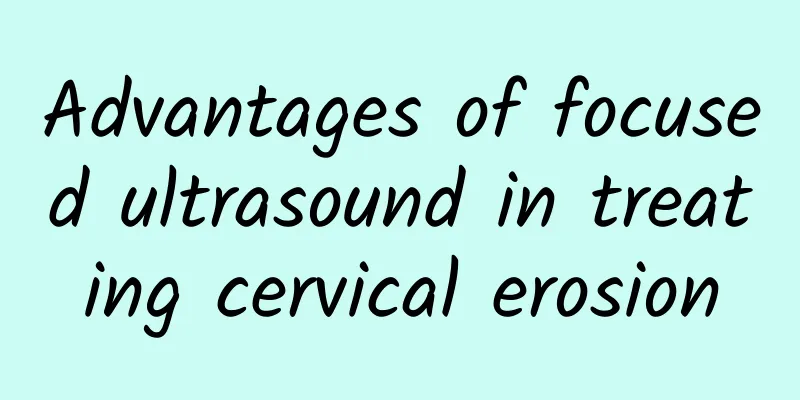What kind of surgery is needed for malignant uterine fibroids? Can malignant uterine fibroids be treated with surgery?

|
Uterine fibroids are a common benign tumor in women. Almost every woman may suffer from uterine fibroids in her lifetime. Most uterine fibroids are benign, but in rare cases, they can develop into malignant tumors, and surgical treatment is necessary. So, what kind of surgery is needed when uterine fibroids become malignant? Generally speaking, surgical treatment is very important for malignant mutations of uterine fibroids. The specific method of surgery depends on the patient's specific situation and the nature of the tumor. Generally speaking, for smaller fibroids, you can choose to remove them by preserving the uterus. However, for larger fibroids or multiple fibroids that become malignant at the same time, a total hysterectomy may be required. A total hysterectomy is a very serious surgery that needs to be performed in a professional hospital and under the guidance of experienced doctors. During the operation, the doctor will remove the entire uterus, adjacent tissues, and some lymphatic tissue. After the operation, the patient needs a period of recovery and further treatment and observation. Whether malignant uterine fibroids can be treated with surgery depends on the doctor's decision based on the patient's specific situation. Generally speaking, surgery is one of the main ways to treat malignant uterine fibroids. Surgery can completely remove the tumor and effectively reduce the risk of recurrence and metastasis. However, the indications for surgery require a comprehensive evaluation by the doctor, including factors such as the patient's age, physical condition, and the size and distribution of the tumor. Ending popular science introduction: Uterine fibroids are tumors caused by the proliferation of uterine smooth muscle cells. Most of them are benign, which means they do not have the ability to metastasize. The occurrence of uterine fibroids is related to changes in female hormone levels, such as abnormal secretion of estrogen and progesterone, endometriosis, etc. Its symptoms mainly include irregular menstruation, excessive menstruation, prolonged menstruation, etc. Some patients may feel abdominal lumps or bloating. In the case of malignant uterine fibroids, surgery is an effective treatment method. Although surgery is a greater stimulation and burden for some patients, surgical treatment under the guidance of a doctor can help patients effectively remove malignant tumors and reduce the risk of recurrence and metastasis. Therefore, regarding the question of whether surgery is needed to treat malignant uterine fibroids, it is recommended that patients seek medical attention in a timely manner and have a detailed discussion and evaluation with the doctor to obtain the most appropriate treatment plan. At the same time, it is also necessary to pay attention to regular gynecological examinations and physical conditioning, timely detection and intervention of the development of uterine fibroids, and protect women's health. |
>>: What foods should not be eaten for uterine fibroids? What foods are good for uterine fibroids?
Recommend
What are the symptoms of cervicitis
The symptoms of cervicitis often have some specia...
How to prevent recurrence of cervical precancerous lesions
How can we prevent the recurrence of cervical pre...
What causes uterine fibroids? Why do uterine fibroids grow?
What causes uterine fibroids? Uterine fibroids, a...
Causes of hyperprolactinemia
Hyperprolactinemia is the most common pituitary d...
What are the things to observe after medical abortion?
Medical abortion refers to the use of injections ...
How to relieve the pain of lymphadenitis in children's abdomen
When a child has abdominal lymphadenitis and pain...
What are the emergency measures for ectopic pregnancy?
If the ectopic pregnancy patient around you sudde...
Can cervical erosion cause infertility?
Can cervical erosion cause infertility? 1. Clinic...
Cervical precancerous lesions surgery recommended by major hospitals
Cervical cancer is a common disease that endanger...
What are the causes of ectopic pregnancy in women
Ectopic pregnancy is very common. If the conditio...
What are the treatments for uterine fibroids?
Uterine fibroids are the most common benign tumor...
Is there any difference between surgical abortion and painless abortion? How much does it cost?
Medical technology is becoming more and more adva...
How to prevent recurrent cervicitis in women? Doing these things can effectively prevent cervicitis
Many women who have given birth will find that th...
The following reasons may cause cervicitis
Cervicitis troubles many women, and patients must...
The dangers of premature ovarian failure at 40 years old
The dangers of premature ovarian failure at 40 ye...









